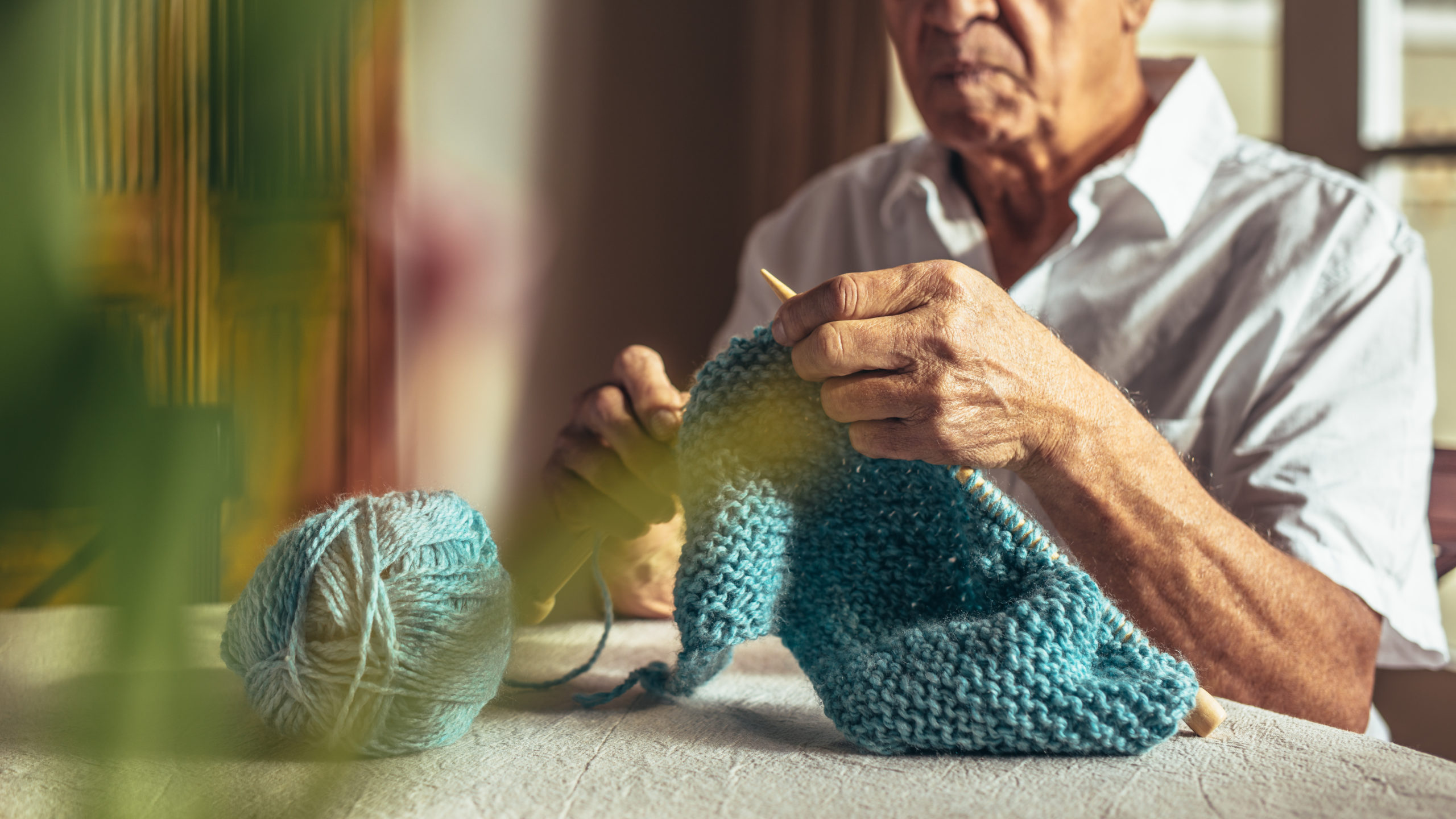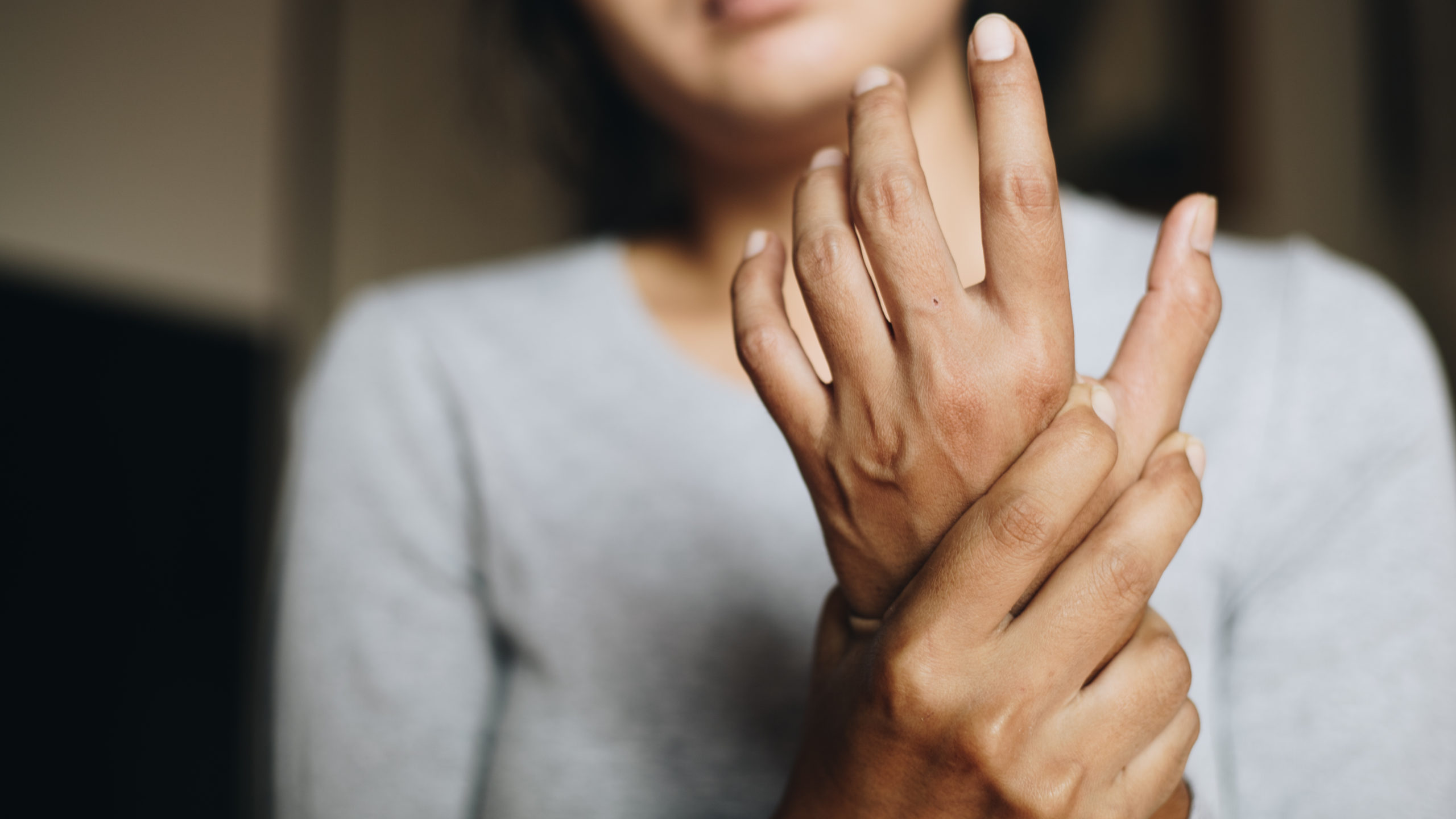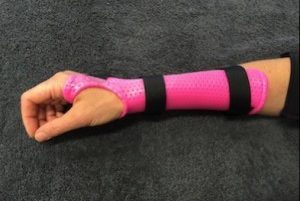
 Many people who enjoy knitting may experience pain or discomfort in the hands or wrist at some point. The repetitive actions involved with knitting exposes one to the development of a number of conditions, the foremost being Carpal Tunnel Syndrome, trigger thumb or De Quervain’s Tenosynovitis.
Many people who enjoy knitting may experience pain or discomfort in the hands or wrist at some point. The repetitive actions involved with knitting exposes one to the development of a number of conditions, the foremost being Carpal Tunnel Syndrome, trigger thumb or De Quervain’s Tenosynovitis.
Both conditions can cause pain, discomfort and impaired function of the wrist and hands, which not only impact the knitting itself, but other common day to day activities.
If you are experiencing prolonged pain in the wrists and hands we recommend seeing a hand therapist, to effectively manage symptoms and avoid pain. Here are a few key tips to practice at home too.
1) Watch Your Posture
Poor posture is a common contributor to pain in the hands while knitting. Awkward positioning of the back, neck and arms can lead to compression of the nerves, resulting in pain and discomfort. Keep your back straight and shoulders down to avoid slouching, which can compress the nerves in the neck. Resting your arms on a table or the arms of a chair may also compress the nerves.
2) Be Sure to Take Plenty of Breaks
Knitting can be very engrossing and often hours may go past where you take no breaks at all. Especially if you are working on a difficult project or to a strict time limit, you might find yourself working non-stop for hours, and this can be a huge contributing factor to hand or wrist pain. Setting an alarm clock at frequent intervals is the best way to manage this issue. Walking around, stretching your arms and hands, back, neck and shoulders is a great way to manage the stress that knitting places on your body.
3) Be Aware of Any Pain or Discomfort
Listen to your body. While taking frequent breaks is a good way to ensure you are giving joints and muscles necessary time to rest, it is also important to be aware of any pain or discomfort in your wrist or hands. If they are aching, stop and stretch – don’t push through. If you are experiencing any chronic symptoms like shooting pains, numbness or impaired function, be sure to stop and to speak with your hand therapist.
4) Watch Your Technique
Even the slightest changes in technique can help effectively manage pain and discomfort. The continental knitting technique is proven to be easier on the hands, and there are many other styles which can be used to relieve the repetitive stress knitting places on the hands and wrist. If a particular project is proving to be placing too much strain on you, switch to something something a little easier. A little change can go a long way.
5) Keep Your Hands Warm While Knitting
Cold, tense muscles can be a key contributing factor to pain in the hands while knitting. Be sure to work in a comfortable environment and to keep hands warm. As with any other strenuous excercises, having a warm up routine is crucial too. Stretching your hands and fingers is an excellent way to increase blood flow to the muscles and to loosen them up.
Treatment of Hand and Wrist Pain

If you suffer from severe pain in the hands during or after knitting, be sure to speak with your hand therapist for advice and treatment. Splinting may be required for more serious conditions in order to promote healthy movement.
A therapist can also provide you with:
• Advice about appropriate activity modifications
• Median nerve gliding exercises to reduce nerve irritability
• Graded strengthening exercises when appropriate
• Range of movement exercises for uninvolved joints
If you have any questions regarding a condition you have or to book an appointment, feel free to contact us here. We will be more than happy to help.


